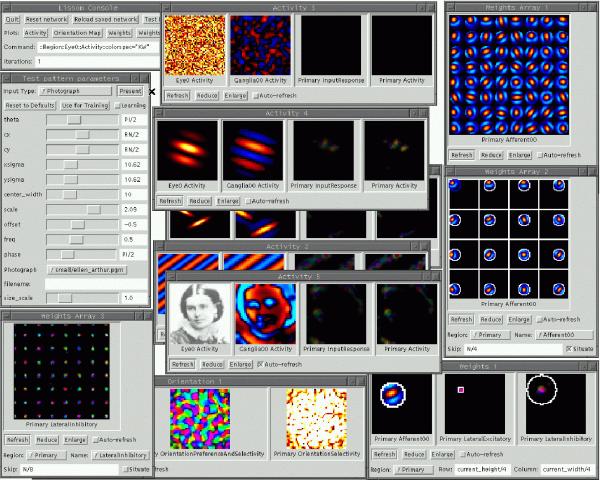
Click on the image to see a PDF version (for zooming in)
Fig. 17.3. Example Topographica screenshot. In this
example session with Topographica, the user is studying the
behavior of an orientation map in the primary visual cortex, using a
model similar to the one depicted in Figure 17.2. The window at the
bottom labeled "Orientation 1" shows the self-organized orientation
map and the orientation selectivity in V1. The five windows labeled
"Activity" show a sample visual image along with the responses of the
retinal ganglion cells and V1 (labeled "Primary"; both the initial and
the settled responses are shown). The input patterns were generated
using the "Test pattern parameters" dialog at left. The window labeled
"Weights 1" (lower right) shows the strengths of the connections to
one neuron in V1. This neuron has afferent receptive fields in the
ganglion cells and lateral receptive fields within V1. The afferent
weights for 8 × 8 and 4 × 4 samplings of the V1 neurons are shown in
the two "Weights Array" windows at right; most neurons are selective
for Gabor-like patches of oriented lines. The inhibitory lateral
connections for an 8 × 8 sampling of neurons are shown in the "Weights
Array 3" window at lower left; neurons tend to receive connections
from their immediate neighbors and from distant neurons of the same
orientation. Topographica is designed to make this type of
large-scale analysis of topographic maps practical, in addition to
providing effective tools for constructing the models and their
training and testing environments.
|